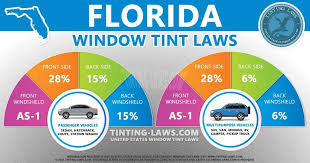Thinking about tinting your car windows? You’re not alone. Many California drivers opt for window tinting to reduce heat, increase privacy, and enhance their car’s appearance. But before you head to the tint shop, it’s important to understand California tint laws to make sure your upgrade is both stylish and street legal.
What Do California Tint Laws Say?
California has strict rules when it comes to how dark or reflective your window tint can be. These rules vary depending on the window’s position in the vehicle:
- Windshield: You can only apply non-reflective tint on the top 4 inches.
- Front Side Windows: These must allow 70% or more of visible light to pass through.
- Back Side Windows and Rear Window: You can use any level of tint darkness, but only if your car has dual side mirrors.
These laws are designed to ensure that drivers maintain clear visibility and that law enforcement can see inside the vehicle if necessary. Choosing the right tint that complies with these limits is essential to avoid legal trouble.
Banned Colors and Reflective Tint
California also restricts certain types of tint based on their color and reflectivity. You’re not allowed to use red, blue, or amber-colored tints on any window. Reflective or mirrored tint that creates a shiny, metallic finish is also prohibited on the front side windows.
To stay compliant, make sure you select a tint film that is approved for use in California. Most professional installers will know what’s legal and what’s not — and they can provide a certificate proving that your tint meets state standards.
Medical Exemptions and Special Circumstances
If you have a medical condition that requires extra protection from sunlight, California does allow for medical exemptions for darker window tint. You’ll need to get documentation from a licensed doctor or optometrist explaining your medical need. While this exemption allows for darker tint on front side windows, reflective and colored tints are still not allowed.
You can find more details on how to apply for this exemption and what documentation is required through state DMV or law enforcement websites.
Penalties for Breaking Tint Laws
If your window tint doesn’t meet California’s legal requirements, you could be issued a fix-it ticket. This usually means a $25 fine and a requirement to remove or replace the non-compliant tint. Repeat violations can lead to higher penalties and even court appearances.
To avoid unnecessary fines, always check your tint’s visible light transmission (VLT) rating and ask your installer for a compliance certificate.
Stay Legal and Enjoy the Benefits
Window tinting offers plenty of perks, from UV protection to enhanced privacy. But to fully enjoy those benefits, it’s important to follow California window tinting regulations. By working with a certified professional and staying informed, you can avoid penalties and enjoy a cooler, more comfortable ride.
Conclusion
Understanding California tint laws is key to making a smart and safe choice for your vehicle. Whether you’re upgrading for looks or comfort, always make sure your tint meets legal standards. A little research now can save you time, money, and hassle down the road.



